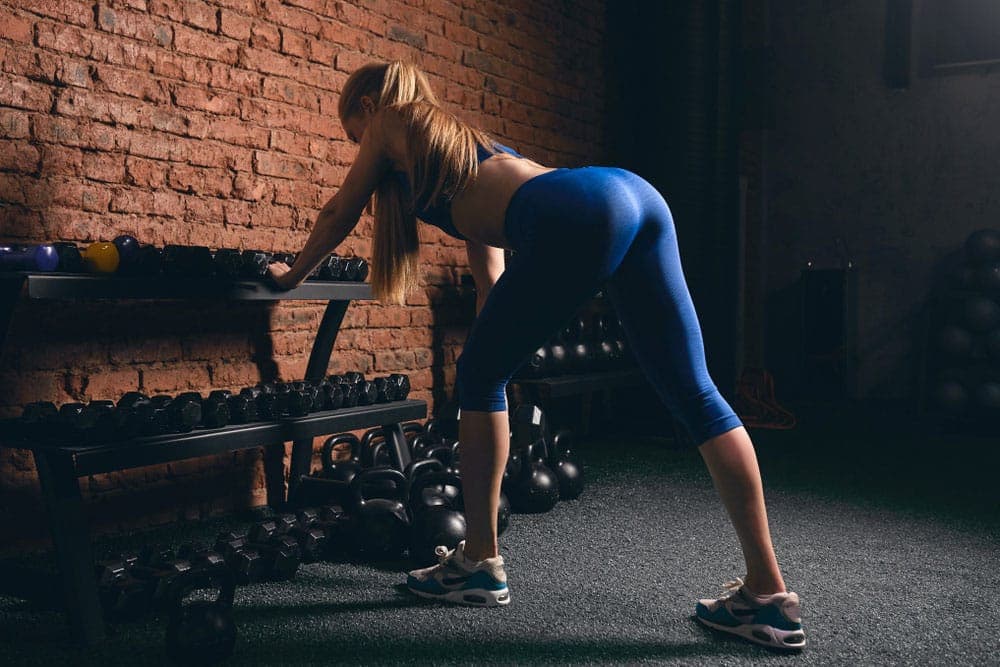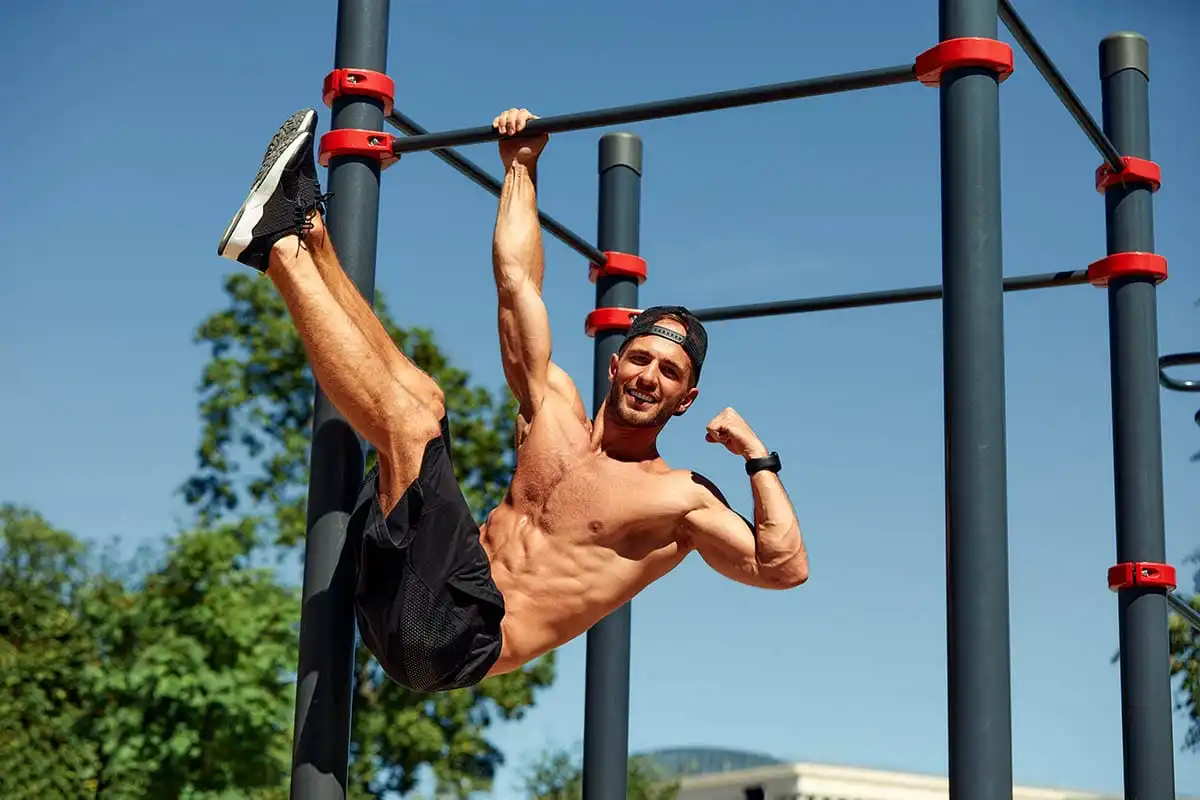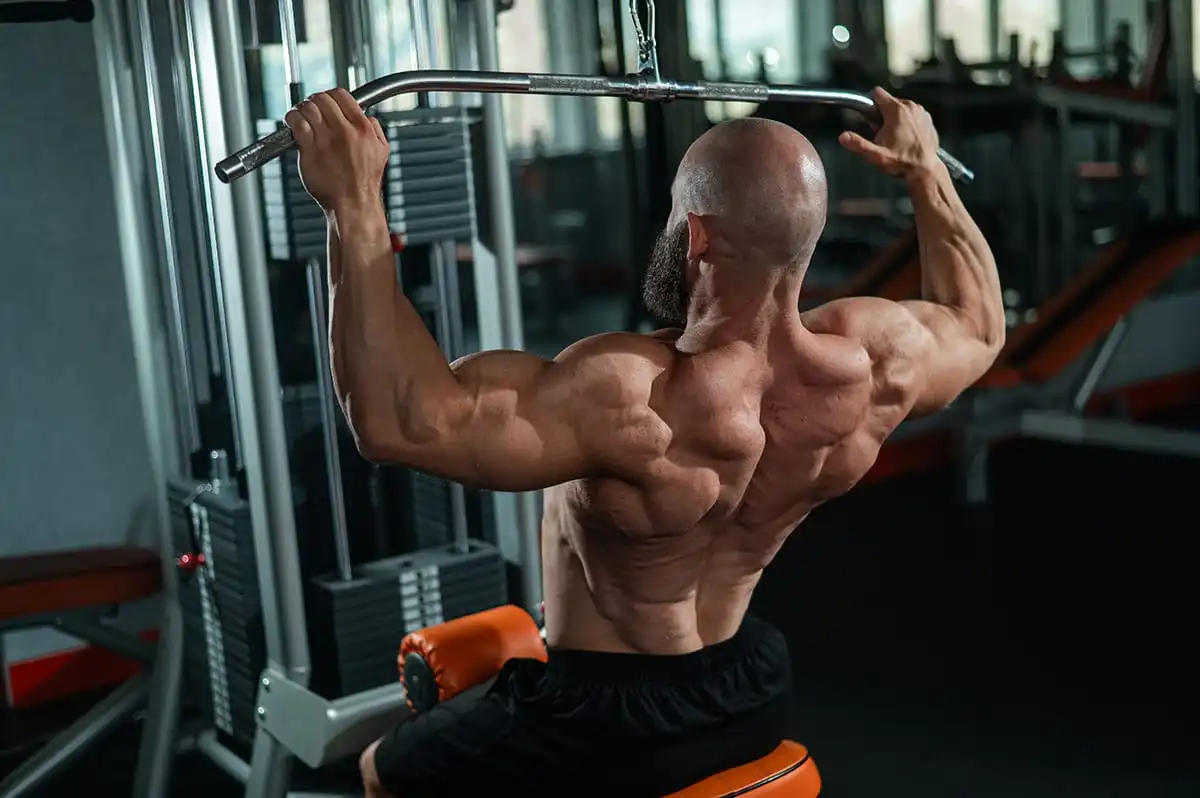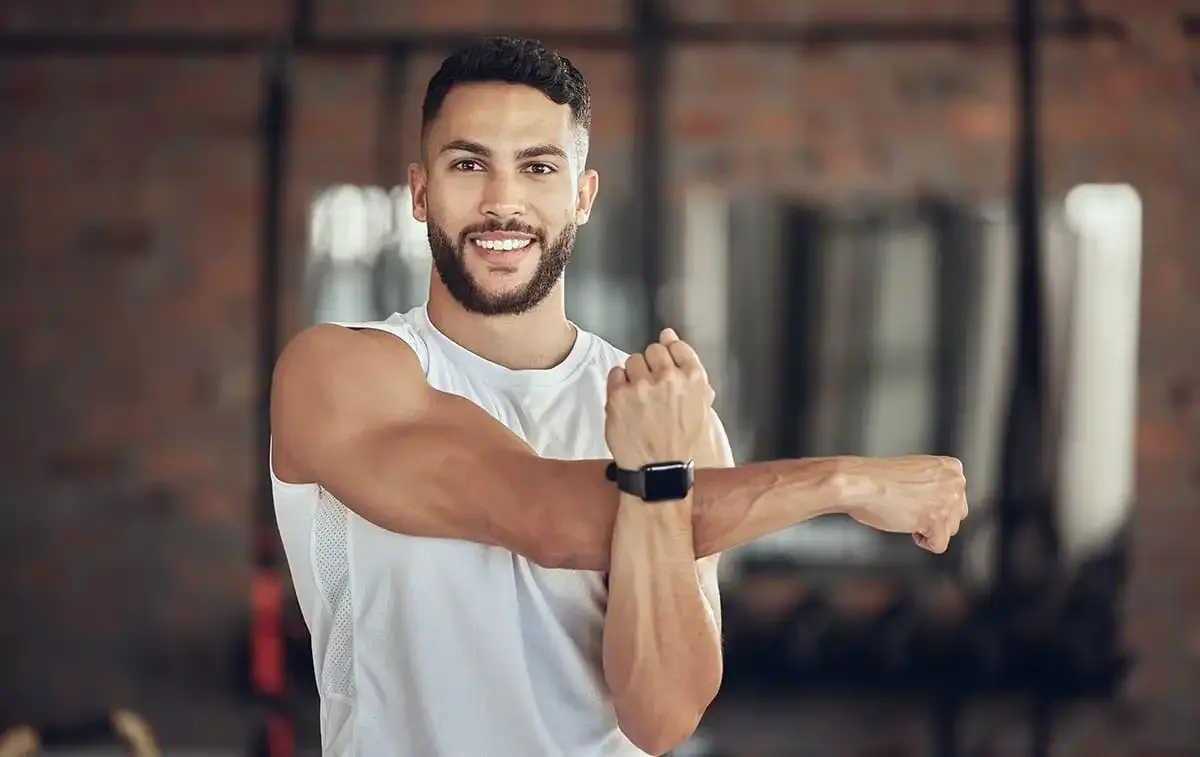Shelf Butt: 4 Moves to Shape Your Shelf
Learn how to work out for a shelf butt shape. Find out the best ways to optimize your glute exercises for a stronger and larger behind.
So thiccccck you could balance a glass of water on it (or your protein shake). The shelf butt is among the most aspirational butt shapes. Gym girls, this one’s for you!
Guys, too, should not be skipping leg day (build those shelves boys, it's 2024!).
Nice glutes are one of the most important muscles to work for an aesthetically pleasing body.
If you're curious about how to build up your glutes to get a shelf-shaped booty, keep reading. We’ll teach you about the muscle activation that goes into stacking up your shelf.
We'll also teach you a few of the best upper glute workouts you can do to get a more developed and aesthetically pleasing butt.
What is a Shelf Butt?
It’s exactly what it sounds like! A shelf is the type of booty that you could stack a pile of books on top of. This butt shape protrudes so strongly that the glutes almost make a perpendicular shape to your back.
The shelf butt gets its name from a shelf that you mount on your wall. This butt is so prominent you could balance things on it.
If you like big butts and you cannot lie, the shelf is one of the best shapes you can aim for, besides the heart-shaped butt or round butt.
What is Sacral Slope?
Most of us are not that genetically blessed with strong enough upper glutes to form a shelf. This butt shape is harder to come by naturally. Your sacral slope, or the way your pelvis tilts, not only impacts your spinal health, but it impacts how your butt sits too.
A sacral slope in the “normal” range is −32° to −49°, or a tilt of your pelvis from 3° to 18°. A tilt or curve outside this range can indicate lumbar lordosis (an inward curve to your spine).
This condition has a strong genetic component and may hurt your back, but people with lordosis may have the appearance of bigger booties because of the way their spines curve naturally.
On the other hand, a condition called kyphosis causes your spine to curve the other way (outward), making you look hunched over with a rounded back.
Your pelvis tilts underneath you here, which may give the illusion of a smaller butt, even if your booty is muscular.
Glute Muscles - Anatomy
Your butt has three major muscles. These are the gluteus maximus, gluteus medius, and gluteus minimus.
Let's see how these muscles work and interact together. Which one must develop the most to give you a shelf?
Gluteus Maximus
This muscle is the largest of your three butt muscles. When we think about the butt, as an alternative name, many of us just say gluteus maximus. But really, this is only one of three muscles that collaborate to move your seat.
The gluteus maximus is located farthest to the back of your butt and makes up most of the shape of your buttock.
What does this booty muscle do? The gluteus maximus mainly functions to extend and rotate your thigh.
When you sit down, the gluteus maximus counteracts gravity and works to flex your hip in a seated position.
Your gluteus maximus can work as an extensor muscle, but only when it needs to. This applies in cases like when you're running, standing from a seated position, or even when you squat down low.
During the “up” portion of your squat, your gluteus maximus works as an extensor too. This means it helps to straighten and extend your hip joint.
Gluteus Medius
The gluteus medius lies between the gluteus maximus and the gluteus minimus.
Along with the gluteus minimus, the gluteus medius is mostly responsible for hip abduction.
That’s when you draw your legs out and away from your body.
Although we think about most glute exercises developing the gluteus maximus, the medius is the key muscle you want to target when working on building a shelf.
Your medius is your highest sitting gluteal muscle. It only makes sense that this is the main muscle to work when we think about building butt volume up top.
We'll come to a few upper glute building exercises that you can get into to develop your shelf later.
First, let's explore the third glute muscle.
Gluteus Minimus
The gluteus minimus is a smaller muscle deep under the other gluteal muscles, right beneath the gluteus medius.
Like the medius, your minimus contributes to hip stability and abduction. This muscle plays a role in maintaining good pelvic alignment.
You use it when you abduct your hips or move them laterally. Like the gluteus medius, the gluteus minimus gives you support when you move dynamically or do weight-bearing exercises.
Upper Glute Workouts to Build Your Shelf
You can't completely isolate any one muscle the gluteals.
Developing volume in the upper glutes means increasing activation at the top of your gluteus maximus and gluteus medius.
What we want to do to build volume, is to focus on exercises that abduct the hip. You want to draw the thighs away from the midline of your body to plump up the top part of your butt.
To support the rest of your shelf, it's also beneficial to get some good volume going in the lower and mid glutes to provide a more even shape.
That we can do by focusing on heavier compound moves like squats and deadlifts. If you want to move more of the work into your upper glutes, do squats and deadlifts using a resistance band.
This can help shift the weight distribution in the moves to be more upper glute-dominant.
Let's look at a few key moves you can do to build that shelf.
Upper Glute Shelf Butt Workout
If you ever explored the concept of increasing your butt size, you probably come across some kind of glute workout that includes barbell hip thrusts.
These are one of the best targeted moves to building up your booty and upper glutes.
What makes the hip thrust so effective for building glutes?
This movement takes you through hip flexion to hip extension.
When you squeeze your glutes at the top of the movement, you're getting into one of the deepest forms of extension you can, using a weight that is pushing directly against the muscles you're trying to work.
This makes it deeply effective for building up powerful glutes.
Weighted Hip Thrust
To do a hip thrust:
- Preparation: set up a weight bench at a flat angle. In a pinch, you can do these off the side of a box at the gym. You want to use a piece of equipment that doesn't dig into your back and that allows you to move comfortably.
- Equipment: Set up a weighted barbell with heavy weights attached. Your leg and butt muscles are some of the strongest in your body, so really challenge yourself here.
- Loading: Lean your back up against your weight bench. The bench should hit you at around your mid to upper back. Bring your weighted barbell over top of your hips, resting it on your pelvis near your hip bones.
- You may want to use padding, or a rolled-up yoga mat so that your pelvic bones don't dig into the barbell. This can be painful for some people. Make sure your barbell isn't set up so high that it digs into your stomach.
- The Lift: Bend your knees and plant both feet firmly on the floor. Your toes can point slightly outward. Make sure your knees are a comfortable enough distance away from you so that at the top of the move, your thighs will be parallel to the floor.
- Drive through your feet. Squeeze and engage your glutes and core and lift your hips towards the ceiling. Think about really squeezing your butt muscles at the top of the move to fully extend your hips. Once your thighs line up with your torso, you’re at the proper angle.
- Coming Down: To come back down, slowly lower your hips back toward the floor, being careful to keep your leg muscles turned on and your core fully engaged as you lower. Don't sit your butt all the way back on the ground, but continue for as many reps as you need.
- Reps: For beginners, we recommend three to four sets of 8 to 10 reps.
Pro Tip
If you prefer to lie on the ground instead of a bench, try a glute bridge. Simply perform the same movement pattern of lifting your hips with your back planted on the ground. You may want to use a lighter weight for this variation.
Banded Hip Abduction
Banded hip abduction is one of the best moves you can do to build your upper glutes. This move is great since it's so versatile.
You can do banded hip abduction sitting, lying on your side, or leaning up against a wall. The variations are infinite for this move.
That being said, let's walk through a seated banded hip abduction variation.
- Set Up: Come to a seat on a weight bench or box. Wrap a resistance band around your thighs. the band should hit about mid-thigh. Although you should feel tension against your legs, it shouldn't feel like your legs would be unable to move. If the resistance feels too strong, grab a band with a lighter weight.
- Hand Placement: For hand positioning, you can either grasp the sides of your weight bench, bring your hands to your hips, or clasp the hands in front of your chest. You want to take a hand position that will keep your body stable and supported.
- Action: Plant your feet comfortably on the ground. Push your knees outward to send your hips away from your midline. Working against the tension of the band, bring your knees back to the starting position with control. The band should not be snapping or jerking your knees together.
- Reps: Repeat for as many reps as needed. We recommend 3 sets of 10 reps.
Box Jumps
Box jumps are a phenomenal way to not only light your glutes, quads, and hamstrings on fire. They're also a great way to get your heart rate up if you need to get shredded and burn a couple calories.
The jumping motion helps to get your heart rate up. Cardiovascular activity is one of the best ways to burn fat and improve your heart health.
On top of a healthy diet, cardio exercise can help you lean out your body if you feel too bulky. But the muscular work in a box jump also lets you grow the glute muscles. It's like a two-in-one.
To do a box jump:
- Set-Up: Place a stable box in front of you. Make sure you're using a piece of equipment that you know can support your weight as well as the dynamic action behind this jump. Using a weight bench is dangerous since it's not built to handle a plyometric move like a jump.
- Preparation: Squat down sending your arms behind you for balance and momentum.
- Take Off: Exhale forcefully, swing your arms forward and push out of your feet to jump up onto your box. Straighten your legs as you come to the top. Once you're done, walk yourself back down and repeat the movement.
- Reps: Continue this move as needed. Aim for 3 sets of 5 reps. Because this move is highly dynamic, it's easy to get tired pretty quickly especially if you're a beginner.
Pro-Tip
Make sure to use a low enough box that you can comfortably jump up to. Once you successfully master a lower box, you can always work your way up to taller equipment.
If you struggle in your box jumps or have weak knees, here are a few moves you can try as alternatives:
Squat Jump: Drop into your squat then simply jump in place and land back in a squat position, taking a break between each rep to come up to standing. No equipment needed.
Step Up: Step up to the box instead of jumping, then walk your way back down.
Single-Leg RDL
This is one of the most challenging moves in our routine but one of the most rewarding as well.
The single-leg Romanian deadlift (RDL) is one of the best ways to correct imbalances in our muscles.
Most of us tend to be either right-side dominant or left-side dominant.
Training single-leg moves can help you build a bigger and more balanced booty.
For a single-leg RDL:
- Preparation: Stand on one leg, keeping a slight bend in your knee. Grab a medium to heavy dumbbell or kettlebell. Hold it in your opposite hand to your standing leg. This helps you create a counterbalance.
- Action: Hinge at the hips, extending your free leg straight back while lowering your weight down towards the ground. Keep the back straight and your chest up. Your spine should be in a neutral position the whole time. Keep lowering your weight until your body and free leg are parallel with the ground.
- Return: Engage your glutes and hamstrings to pull yourself back up to the starting position.
- Reps: Keep going for as many reps as you like on one leg, then switch to the other. Make sure you get an even number of reps in on both sides.
Pro-Tip
If you're new to this exercise or struggle with your balance, start with no weight. You can even hold a box, wall, or the back of a chair for support as you're lowering your body forward when you're starting.
Send your gaze out and slightly ahead of you rather than straight down. Keep the eyes locked in one place. This will help you hold your balance if it's something you struggle with.
Glute Growth Tips
On top of all that work to build bigger butt muscles, make sure you incorporate some cardiovascular moves into your butt day routine.
Try a cardio move that targets your shelf. Stepmills and StairMasters are a great way to do this. They'll get your heart pumping, while the step-up motion also lets you feel some burn in your booty.
Finally, for those muscles to shine through, you'll need to focus on your diet and work to maintain a healthy body fat percentage.
To build up your body and maintain a lean physique, make sure you focus on eating a balanced diet. This includes foods like lean proteins, leafy greens, complex carbohydrates, and healthy fats.
The Takeaway
Why not go for a lofty body goal this year? Although the shelf may be a little bit harder to achieve for those of us who are not predisposed to it genetically, there are still a ton of booty-building moves you can do to add volume to your upper glutes.
Most of the volume in your upper glutes is due to a strong gluteus medius. The gluteus medius as well as the gluteus minimus help to abduct your hips which means to pull your thighs away from the midline of your body.
With this in mind, we can focus on moves that work hip abduction. Moves like banded hip abduction are one of the best ways to target the upper butt muscles.
Working on your gluteus medius and minimus with a full range of motion is one of the best way to activate these muscles in the body that are key to helping you move.
Make sure to work on exercises that work the internal rotation and external rotation of your thighs as well.
Hip thrusts are another fantastic way to add a lot of heavy weight to your glutes and really get those muscles popping. For another variation similar to this move, try a glute bridge lying on the ground.
Building muscle also requires lots of effort for recovery. Make sure that you're stretching your muscles after any booty-building moves. On top of a good diet, you'll want to hydrate and focus on getting plenty of quality sleep.
These moves will have you on track to building a better shelf and getting your glutes stacked up this year.
References
Celestre, P. C., Dimar, J. R., 2nd, & Glassman, S. D. (2018). Spinopelvic Parameters: Lumbar Lordosis, Pelvic Incidence, Pelvic Tilt, and Sacral Slope: What Does a Spine Surgeon Need to Know to Plan a Lumbar Deformity Correction?. Neurosurgery clinics of North America, 29(3), 323–329. https://doi.org/10.1016/j.nec.2018.03.003
Elzanie A, Borger J. Anatomy, Bony Pelvis and Lower Limb, Gluteus Maximus Muscle. [Updated 2023 Apr 1]. In: StatPearls [Internet]. Treasure Island (FL): StatPearls Publishing; 2024 Jan-. Available from: https://www.ncbi.nlm.nih.gov/books/NBK538193/
Jiang, Y., Sun, X., Peng, X., Zhao, J., & Zhang, K. (2017). Effect of sacral slope on the biomechanical behavior of the low lumbar spine. Experimental and therapeutic medicine, 13(5), 2203–2210. https://doi.org/10.3892/etm.2017.4251
Lam JC, Mukhdomi T. Kyphosis. [Updated 2023 Aug 8]. In: StatPearls [Internet]. Treasure Island (FL): StatPearls Publishing; 2024 Jan-. Available from: https://www.ncbi.nlm.nih.gov/books/NBK558945/
Shah A, Bordoni B. Anatomy, Bony Pelvis and Lower Limb, Gluteus Medius Muscle. [Updated 2023 Feb 17]. In: StatPearls [Internet]. Treasure Island (FL): StatPearls Publishing; 2024 Jan-. Available from: https://www.ncbi.nlm.nih.gov/books/NBK557509/
Related articles
How to Start Calisthenics: A Guide to Bodyweight Fitness
6-Day Gym Workout Schedule: Maximize Your Fitness
2-Day Split Workout: Your Guide to Efficient Gains


Get fit with Flex
Build muscle & lose weight fast for free.
Available on iPhone + Apple Watch





